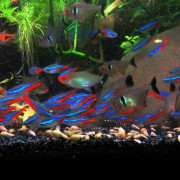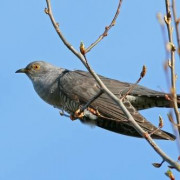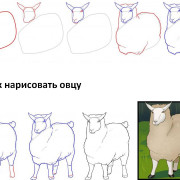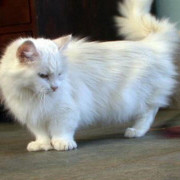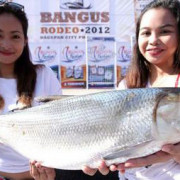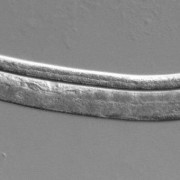OceanaFrilled SharkEngage Youth with Sailors for the SeaLearn MoreSave the Oceans, Feed the WorldAsk GrubHub to Take Shark Fins Off the MenuShow Your Support With a DonationShow Your Support With a DonationBecome a Wavemaker
Содержание:
Interactions with humans Edit
The frilled shark has seldom been encountered alive, and thus poses no danger to humans (though scientists have accidentally cut themselves examining the teeth of dead specimens). On August 27, 2004, the first observation of this species in its natural habitat was made by the ROV Johnson Sea Link II, on the Blake Plateau off the southeastern United States. On January 21, 2007, a Japanese fisherman discovered a 1.6 m (5.2 ft) long female alive at the surface, perhaps there because of illness or weakness from the warm water. It was brought to Awashima Marine Park in Shizuoka, where it died after a few hours. Garman, and numerous authors since, have advanced the frilled shark as an explanation for sea serpent sightings. Because of the shark’s modest size, some zoologists have posited the existence of a giant relative, particularly as larger Chlamydoselachus species are known from the fossil record.
Small numbers of frilled sharks are caught incidentally by various deepwater commercial fisheries around the world, using trawls, gillnets, and longlines. In particular, it is regularly taken in Suruga Bay in bottom gillnets meant for sea bream and gnomefish, and in midwater trawls meant for the shrimp species Sergia lucens. Japanese fishermen regard it as a nuisance, as it damages the nets. This shark is sometimes sold for meat or processed into fishmeal, but is not economically significant. Because of its very low reproductive rate and the continuing expansion of commercial fisheries into its habitat, the International Union for Conservation of Nature (IUCN) has previously listed it as Near Threatened, although the species was downlisted to Least Concern in 2016.
In December 2014, trawler skipper David Guillot caught a 1.5 m (4.9 ft) frilled shark while «fishing in water more than 1 km (3,300 ft) deep near Lakes Entrance», in Victoria, Australia. The shark was taken to the Commonwealth Scientific and Industrial Research Organisation, where its identification was confirmed by experts.
Early in April 2017, during the filming of a Japanese television variety program in Tokyo Bay, a live frilled shark specimen was captured.
In August 2017 a group of scientists caught a 1.5 m (4.9 ft) frilled shark in the waters off of Portimão, Portugal. The shark, identified as a male, was pulled from a depth of roughly 700 m (2,300 ft). On November 14, 2017, researchers reported that another frilled shark was caught near the coast of Portugal.
Human interactions
The frilled shark has seldom been encountered alive, and thus poses no danger to humans (though scientists have accidentally cut themselves examining its teeth). On August 27, 2004, the first observation of this species in its natural habitat was made by the II, on the off the southeastern United States. On January 21, 2007, a Japanese fisherman discovered a 1.6 m (5.2 ft) long female alive at the surface, perhaps there because of illness or weakness from the warm water. It was brought to Awashima Marine Park in , where it died after a few hours. Garman, and numerous authors since, have advanced the frilled shark as an explanation for sea serpent sightings. Because of the shark’s modest size, some zoologists have posited the existence of a giant relative, particularly as larger Chlamydoselachus species are known from the fossil record.
Small numbers of frilled sharks are by various deepwater around the world, using , , and . In particular, it is regularly taken in Suruga Bay in bottom gillnets meant for and , and in midwater trawls meant for the Sergia lucens. Japanese fishermen regard it as a nuisance, as it damages the . This shark is sometimes sold for meat or processed into , but is not economically significant. In June 2018 the New Zealand classified the frilled shark as «At Risk – Naturally Uncommon» with the qualifiers «Data Poor» and «Secure Overseas» under the . Because of its very low reproductive rate and the continuing expansion of into its habitat, the (IUCN) has previously listed it as , although the species was downlisted to in 2016.
In December 2014, trawler skipper David Guillot caught a 1.5 m (4.9 ft) frilled shark while «fishing in water more than 1 km (3,300 ft) deep near «, in , . The shark was taken to the , where its identification was confirmed.
Early in April 2017, during the filming of a Japanese television variety program in , a live specimen of the creature was captured.
In August 2017 a group of scientists caught a 1.5 m (4.9 ft) frilled shark in the waters off of , . The male shark was pulled from a depth of roughly 700 m (2,300 ft). On November 14, 2017, researchers reported that another frilled shark was caught near the coast of Portugal.
References
- Allen, Thomas B. (1999). The Shark Almanac. New York: The Lyons Press. pp. 48. ISBN 1-55821-582-4.
- ^ Compagno (1984). Sharks of the World: An annotated and illustrated catalogue of shark species known to date. Food and Agriculture Organization of the United Nations. pp. 14–15.
- General references
- Compagno, Dando, & Fowler, Sharks, Collins Gem, HarperCollins, London 2006) ISBN 0-00-721986-5
- Compagno, Dando, & Fowler, Sharks of the World, Princeton University Press, New Jersey 2005 ISBN 0-691-12072-2
- IUCN 2007. 2007 IUCN Red List of Threatened Species. . Downloaded on 28 September 2007.
Description
The southern African frilled shark looks very similar to the frilled shark, with a long snake-like body and a broad, flattened head. The eyes are large and rounded. The sizable mouth is placed terminally on the blunt snout, containing around 30 tooth rows in the upper jaw and 27 tooth rows in the lower jaw. Each tooth has three slender, smooth, recurved cusps, with tiny cusplets between them, and a base that interlocks with the tooth behind it. There are six pairs of long gill slits, with the first pair meeting over the throat. The pectoral fins are broad and rounded, originating just behind the sixth gill slit. The pelvic and anal fins are large with long bases and curved margins. The single dorsal fin is set far back on the body over the anal fin, and has a short base. The caudal fin is low and somewhat triangular, without a lower lobe.
Compared to the frilled shark, the southern African frilled shark has several proportional differences, including a longer head and gill slits, more widely spaced eyes and nares, broader mouth, and a greater distance between the head and the pectoral fins. The largest known female is the immature 117 cm (46 in) long holotype, and the largest known males measure 99 cm (39 in) long. In life the shark is dark gray, but covered with a thin membrane that gives it a uniform dark brown color.
DescriptionEdit
With its elongated, eel-like body and strange appearance, the frilled shark has long been likened to the mythical sea serpent. The head is broad and flattened with a short, rounded snout. The nostrils are vertical slits, separated into incurrent and excurrent openings by a leading flap of skin. The moderately large eyes are horizontally oval and lack nictitating membranes (protective third eyelids). The very long jaws are positioned terminally (at the end of the snout), as opposed to the underslung jaws of most sharks. The corners of the mouth are devoid of furrows or folds. The tooth rows are rather widely spaced, numbering 19–28 in the upper jaw and 21–29 in the lower jaw. The teeth number around 300 in all; each tooth is small, with three slender, needle-like cusps alternating with two cusplets. There are six pairs of long gill slits with a «frilly» appearance created by the extended tips of the gill filaments, giving this shark its name. The first pair of gill slits meet across the throat, forming a «collar».
The pectoral fins are short and rounded. The single, small dorsal fin is positioned far back on the body, about opposite the anal fin, and has a rounded margin. The pelvic and anal fins are large, broad, and rounded, and also positioned well back on the body. The caudal fin is very long and roughly triangular, without a lower lobe or a ventral notch on the upper lobe. There are a pair of thick skin folds of unknown function running along the belly, separated by a groove. The midsection is relatively longer in females than in males, with the pelvic fins pushed closer to the anal fin. The dermal denticles are small and shaped like the tip of a chisel, becoming enlarged and sharp on the dorsal margin of the caudal fin. This species is a uniform dark brown or gray. The frilled shark differs from its southern African relative, C. africana, in having more vertebrae (160–171 vs 147) and more turns in the spiral valve intestine (35–49 versus 26–28), as well as in various proportional measurements such as a longer head and shorter gill slits. The maximum known length is 1.7 m (5.6 ft) for males and 2.0 m (6.6 ft) for females.
Происхождение вида и описание
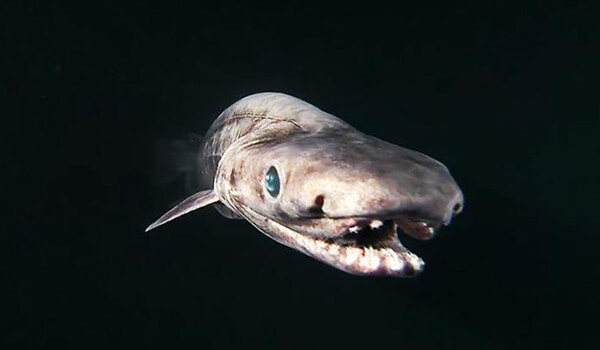
Фото: Плащеносная акула
Впервые плащевая акула была описана с научной точки зрения немецким ихтиологом Л. Додерлейном, который побывал в Японии с 1879 по 1881 г и доставил в Вену два образца вида. Но его рукопись с описанием вида, была утеряна. Первое дошедшее до нас описание было задокументировано американским зоологом С. Гарманом, который обнаружил самку длиной 1,5 м, пойманную в бухте Сагами. Его отчет «Необыкновенная акула» был опубликован в 1884 г. Гарман поместил новый вид в свой род и семейство и дал ему название Chlamydoselachus anguineus.
Окаменелости плащеносных акул на островах Чатем в Новой Зеландии, датированные границей мелового и палеогенового периода, были обнаружены вместе с останками птиц и хвойных шишек, что свидетельствует о том, что в то время эти акулы жили на мелководье. Предыдущие исследования других видов Chlamydoselachus показали, что у особей, живущих в более мелкой воде, были большие и крепкие зубы для еды беспозвоночных с твердой оболочкой.
Видео: Плащеносная акула
В связи с этим было выдвинуто предположение, что плащеносцы выжили после массового вымирания, были в состоянии использовать свободные ниши на мелководье и на континентальных шельфах, последнее открывало движение к глубоководным местам обитания, в которых они сейчас живут.
Изменение доступности пищи может быть отражено в том, как изменилась морфология зубов, которые стали острее и направлены внутрь, чтобы охотиться на глубоководных животных с мягким телом. Начиная с позднего палеоцена и до наших дней, плащеносные акулы были вне конкуренции на своих глубоководных местах обитания и распространения.
References
- Allen, Thomas B. (1999). The Shark Almanac. New York: The Lyons Press. pp. 48. ISBN 1-55821-582-4.
- ↑ Compagno (1984). Sharks of the World: An annotated and illustrated catalogue of shark species known to date. Food and Agriculture Organization of the United Nations. pp. 14–15.
- General references
- Compagno, Dando, & Fowler, Sharks, Collins Gem, HarperCollins, London 2006) ISBN 0-00-721986-5
- Compagno, Dando, & Fowler, Sharks of the World, Princeton University Press, New Jersey 2005 ISBN 0-691-12072-2
- IUCN 2007. 2007 IUCN Red List of Threatened Species. . Downloaded on 28 September 2007.
Taxonomy
The (C. anguineus) was long thought to be the only extant member of its genus and family. The existence of a second Chlamydoselachus species off southern Africa was first suspected from a specimen caught off , in February 1988, by the South African research ship FRS Africana (after which this species would eventually be named). The specimen was an adult male smaller than other known mature C. anguineus, and subsequent investigations revealed other consistent differences between frilled sharks in this region and C. anguineus. The new species was termed Chlamydoselachus «sp. A», before being formally described in 2009 by David Ebert and , in a paper for the Zootaxa. The was a 117 cm (46 in) long immature female caught at a depth of 409 m (1,342 ft) off the , Namibia, by the research vessel Benguela.
Description
The southern African frilled shark looks very similar to the frilled shark, with a long -like body and a broad, flattened head. The eyes are large and rounded. The sizable mouth is placed terminally on the blunt snout, containing around 30 tooth rows in the upper jaw and 27 tooth rows in the lower jaw. Each tooth has three slender, smooth, recurved cusps, with tiny cusplets between them, and a base that interlocks with the tooth behind it. There are six pairs of long , with the first pair meeting over the throat. The are broad and rounded, originating just behind the sixth gill slit. The and are large with long bases and curved margins. The single is set far back on the body over the anal fin, and has a short base. The is low and somewhat triangular, without a lower lobe.
Compared to the frilled shark, the southern African frilled shark has several proportional differences, including a longer head and gill slits, more widely spaced eyes and , broader mouth, and a greater distance between the head and the pectoral fins. The largest known female is the immature 117 cm (46 in) long holotype, and the largest known males measure 99 cm (39 in) long. In life the shark is dark gray, but covered with a thin membrane that gives it a uniform dark brown color.
References
- ^
- ^
- ^ Bright, M. (2000). The Private Life of Sharks: The Truth Behind the Myth. Stackpole Books. pp. 210–213. 0-8117-2875-7.
- ^
- ^
- ^
- ^
- Marsili, S. (2007). Analisi systematic, paleoecological e paleobiogeographical Della selaciofauna polio-Pleistocene del Mediterraneo.
- ^ Compagno, L.J.V. (1984). Sharks of the World: An Annotated and Illustrated Catalogue of Shark Species Known to Date. Food and Agricultural Organization of the United Nations. pp. 14–15. 92-5-101384-5.
- ^
- ^
- ^ Ebert, D.A.; Compagno, L.J.V. (2009). «Chlamydoselachus africana, a new species of frilled shark from southern Africa (Chondrichthyes, Hexanchiformes, Chlamydoselachidae)». Zootaxa. 2173: 1–18.
- ^
- ^ Tanaka, S.; Shiobara, Y.; Hioki, S.; Abe, H.; Nishi, G.; Yano, K. & Suzuki, K. (1990). «The reproductive biology of the frilled shark, Chlamydoselachus anguineus, from Suruga Bay, Japan». Japanese Journal of Ichthyology. 37 (3): 273–291.
- ^
- Last, P.R.; J.D. Stevens (2009). Sharks and Rays of Australia (second ed.). Harvard University Press. pp. 34–35. 978-0-674-03411-2.
- Collett, R. (1897). «On Chlamydoselacnus anguineus Garman. A remarkable shark found in Norway 1896″. Christiania. 11: 1–17.
- Machida, M.; Ogawa, K. & Okiyama, M. (1982). «A new nematode (Spirurida, Physalopteridae) from frill shark of Japan». Bulletin of the National Science Museum Series A (Zoology). 8 (1): 1–5.
- Nishikawa, T. (1898). «Notes on some embryos of Chlamydoselachus anguineus, Garm». Annotationes Zoologicae Japonenses. 2: 95–102.
meet the wonderfully weird
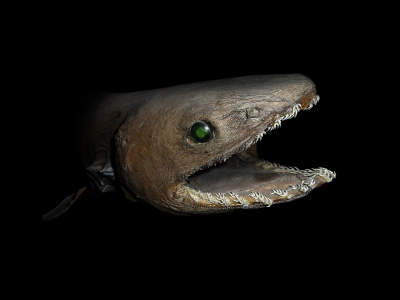
aw, look, he’s happy to see you.
a denizen of the deep sea, the Frilled Shark is typically found in the Atlantic and Pacific oceans anywhere from 160 — 5,000 ft deep. despite being so widespread, Frilled Sharks are hardly ever seen by humans. (they are very shy, probably because all the other sharks make fun of them.)
these bashful weirdos can reach lengths of six and a half feet, and have been termed “a living fossil”, which is what Science calls something that is so fucking weird Science doesn’t know what to do with it.
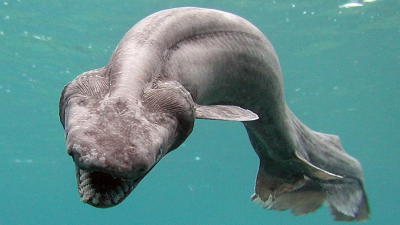
but does Science know that I love them?
Frilled Sharks are a wonderful anomoly in an already strange family, though they are often overshadowed by their more popular relative the Goblin Shark. but today, they will be appreciated dammit.
they’re almost eel-like
(the scientific term for this body type is Total Noodle Boy), and kind of hard to look at directly for long because your brain keeps rejecting what it’s seeing. (it helps if you squint)
they’re weird.
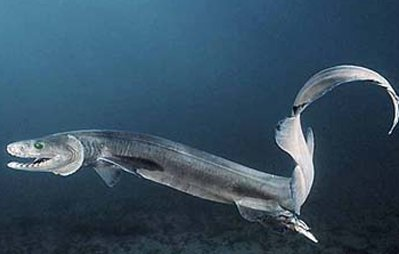
but they own it.
part of the reason the Frilled Shark is such a wonderfully bizarre little slimy worm child is because they’re a member of the order Hexanchiformes. this ancient order of sharks dates back to the Jurassic, when these naughty wiggle boys were spending earth time with the Dinosaurs.
this means that they share a lot of characteristics with fossil sharks, possibly more than any other shark living today.
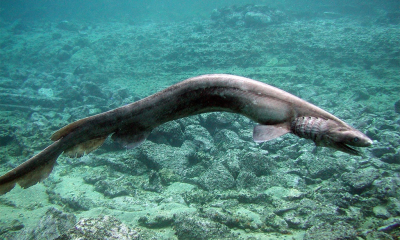
man, the Jurassic must have been wild.
I previously described these squirmy tube men as “eel-like”, but that’s not entirely correct. I should have said “possesses large quantity of snakeitude”.
it is thought that Frilled Sharks hunt by coiling themselves and striking at prey (like a cobra), using their multiple rows of rear-facing teeth to rip into their unfortunate victim and swallowing it whole. (NOT like… actually no, cobras do that too. yeegh.) that’s pretty impressive, since these awkward slime pals will eat anything from fish to squid to other sharks.
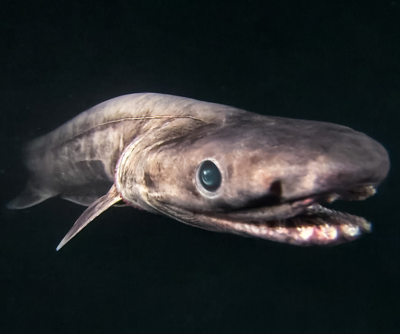
don’t think about it don’t think about it
in fact, those awful awful jaws have such a wide gape that the shark is able to swallow meals up to half its own size in one go.
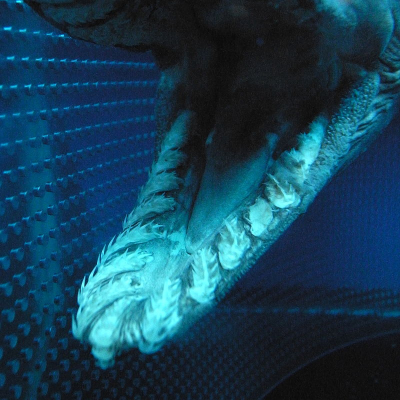
DON’T THINK ABOUT IT DON’T THINK ABOUT IT
RIGHT, MOVING ON.
another fun fact about the Frilled Shark is that they are viviparous, meaning they carry their kids around internally and give live birth like respectable vertibrates. many sharks do this, but these wobbly slither friends have one stand-out factor that sets them apart from the pack.
they have the longest pregnancy of any known vertibrate!
are you ready for this? (you’re not ready for this)
it’s
(no, we have no idea why this is. just be glad you aren’t a Frilled Shark.)
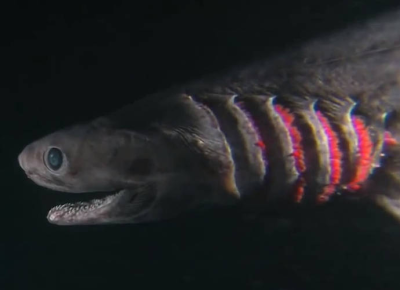
no wonder it’s making that face.
these wriggly danger tubes are occasionally caught as bycatch by the fishing industry, but they seem to be doing okay for now. (I’m glad, because I love them.)
it is our that hope the Frilled Shark will continue to awkwardly writhe around in the world’s oceans for a long, long time.
Taxonomy
The frilled shark (C. anguineus) was long thought to be the only extant member of its genus and family. The existence of a second Chlamydoselachus species off southern Africa was first suspected from a specimen caught off Lüderitz, Namibia in February 1988, by the South African research ship FRS Africana (after which this species would eventually be named). The specimen was an adult male smaller than other known mature C. anguineus, and subsequent investigations revealed other consistent differences between frilled sharks in this region and C. anguineus. The new species was termed Chlamydoselachus «sp. A», before being formally described in 2009 by David Ebert and Leonard Compagno, in a paper for the scientific journal Zootaxa. The holotype was a 117 cm (46 in) long immature female caught at a depth of 409 m (1,342 ft) off the Cunene River, Namibia, by the research vessel Benguela.
Distribution and habitatEdit
Rather uncommon, the frilled shark has been recorded from a number of widely scattered locations in the Atlantic and Pacific Oceans. In the eastern Atlantic, it occurs off northern Norway, northern Scotland and western Ireland, from France to Morocco including Madeira, and off Mauritania. In the central Atlantic, it has been caught at several locations along the Mid-Atlantic Ridge, from north of the Azores to the Rio Grande Rise off southern Brazil, as well as over the Vavilov Ridge off West Africa. In the western Atlantic, it has been reported from off New England, Georgia, and Suriname. In the western Pacific, it is known from southeastern Honshu, Japan, to Taiwan, off New South Wales and Tasmania in Australia, and around New Zealand. In the central and eastern Pacific, it has been found off Hawaii, California, and northern Chile.The frilled sharks off southern Africa were described as a different species, C. africana, in 2009.
The frilled shark inhabits the outer continental shelf and upper to middle continental slope, seeming to favor upwellings and other biologically productive areas. Though it has been caught from a depth of 1,570 m (5,150 ft), it usually does not occur deeper than 1,000 m (3,300 ft). In Suruga Bay, it is most common at a depth of 50–200 m (160–660 ft), except from August to November when the temperature at the 100 m (330 ft) water layer exceeds 15 °C (59 °F) and the sharks shift into deeper water. On rare occasions, this species has been seen at the surface. The frilled shark is usually found close to the bottom, with one individual observed swimming over an area of small sand dunes. However, its diet suggests that it does make substantial forays upward into open water. This species may make vertical migrations, approaching the surface at night to feed. There is spatial segregation by size and reproductive condition.
Biology and ecology
From stomach contents, the southern African frilled shark seems to feed mainly on smaller sharks such as the African sawtail catshark (Galeus polli). Its jaws, buccal cavity, and abdomen are all highly distensible, suggesting that this shark is specialized for capturing and swallowing whole large prey, with its rows of needle-like, recurved teeth preventing escape. One 92 cm (36 in) long specimen was found to have swallowed a ghost catshark (Apristurus sp.) that measured 40% of its body length. Although adult females are unknown, the southern African frilled shark is presumed to be aplacental viviparous like the frilled shark. Males mature sexually at a length of 91.5 cm (36.0 in).
meet the wonderfully weird

aw, look, he’s happy to see you.
a denizen of the deep sea, the Frilled Shark is typically found in the Atlantic and Pacific oceans anywhere from 160 — 5,000 ft deep. despite being so widespread, Frilled Sharks are hardly ever seen by humans. (they are very shy, probably because all the other sharks make fun of them.)
these bashful weirdos can reach lengths of six and a half feet, and have been termed “a living fossil”, which is what Science calls something that is so fucking weird Science doesn’t know what to do with it.

but does Science know that I love them?
Frilled Sharks are a wonderful anomoly in an already strange family, though they are often overshadowed by their more popular relative the Goblin Shark. but today, they will be appreciated dammit.
they’re almost eel-like
(the scientific term for this body type is Total Noodle Boy), and kind of hard to look at directly for long because your brain keeps rejecting what it’s seeing. (it helps if you squint)
they’re weird.

but they own it.
part of the reason the Frilled Shark is such a wonderfully bizarre little slimy worm child is because they’re a member of the order Hexanchiformes. this ancient order of sharks dates back to the Jurassic, when these naughty wiggle boys were spending earth time with the Dinosaurs.
this means that they share a lot of characteristics with fossil sharks, possibly more than any other shark living today.

man, the Jurassic must have been wild.
I previously described these squirmy tube men as “eel-like”, but that’s not entirely correct. I should have said “possesses large quantity of snakeitude”.
it is thought that Frilled Sharks hunt by coiling themselves and striking at prey (like a cobra), using their multiple rows of rear-facing teeth to rip into their unfortunate victim and swallowing it whole. (NOT like… actually no, cobras do that too. yeegh.) that’s pretty impressive, since these awkward slime pals will eat anything from fish to squid to other sharks.

don’t think about it don’t think about it
in fact, those awful awful jaws have such a wide gape that the shark is able to swallow meals up to half its own size in one go.

DON’T THINK ABOUT IT DON’T THINK ABOUT IT
RIGHT, MOVING ON.
another fun fact about the Frilled Shark is that they are viviparous, meaning they carry their kids around internally and give live birth like respectable vertibrates. many sharks do this, but these wobbly slither friends have one stand-out factor that sets them apart from the pack.
they have the longest pregnancy of any known vertibrate!
are you ready for this? (you’re not ready for this)
it’s
(no, we have no idea why this is. just be glad you aren’t a Frilled Shark.)

no wonder it’s making that face.
these wriggly danger tubes are occasionally caught as bycatch by the fishing industry, but they seem to be doing okay for now. (I’m glad, because I love them.)
it is our that hope the Frilled Shark will continue to awkwardly writhe around in the world’s oceans for a long, long time.

